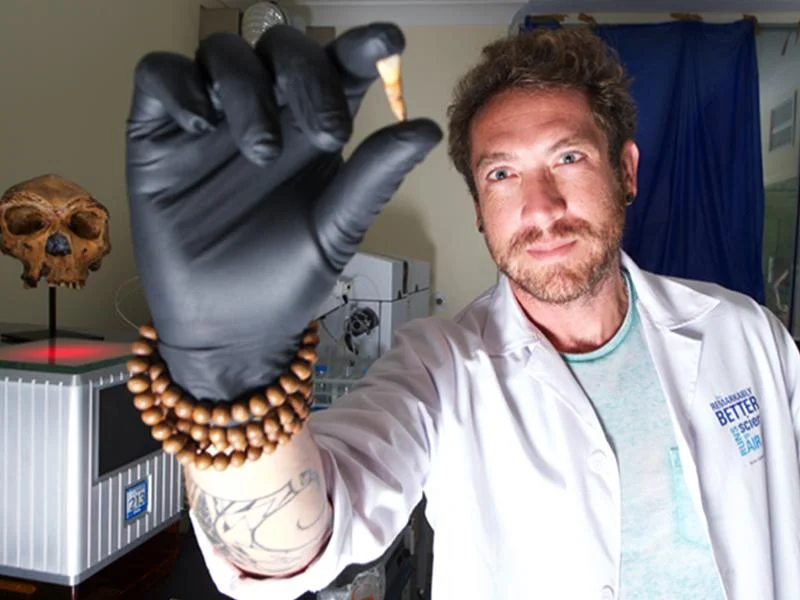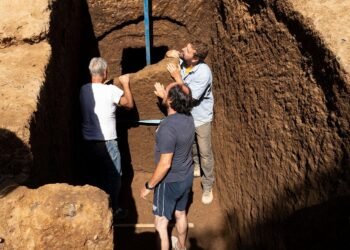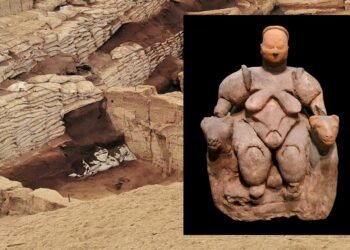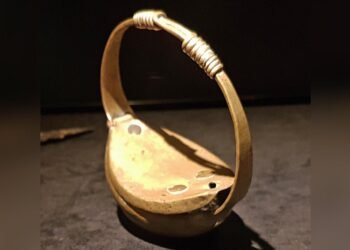Fossil tooth analysis conducted by Dr. Renaud Joannes-Boyau, a geochemist at Southern Cross University, has played a crucial role in a collaborative international effort to accurately identify the earliest humans.

Published in the scientific journal PNAS, the study highlights that out of the 23 specimens analyzed from southern Africa, ranging from 2.5 to 1.4 million years old, only a maximum of seven can be classified as Homo, while the rest likely belong to Australopithecus or Paranthropus.
These findings have significant implications for our understanding of hominin diversity, paleobiology, and human evolution. Dr. Joannes-Boyau utilized specialized equipment at Southern Cross University’s Lismore campus to detect lactation behavior through geochemical analysis of tooth fossils.
Determining the origins and biogeographic diversity of early Homo remains a major focus of paleoanthropology.
Proper taxonomic identification is crucial to avoid biasing interpretations of various paleobiological aspects such as eating behavior, ecological interactions, hominin paleodiversity, adaptations, and evolutionary relationships. It is essential to accurately identify the earliest individuals of our species in order to comprehend the timing, location, and mechanisms of Homo’s initial appearance in Africa.
However, there is ongoing debate and no consensus on the definition of the genus Homo, leading to disagreements regarding the identification of early Homo specimens. Southern Africa has numerous sites (Sterkfontein, Swartkrans, Kromdraai, and Drimolen) with remains attributed to early Homo, dating between 2.5 and 1.4 million years ago.
Some of these specimens were previously thought to be Australopithecus or Paranthropus, complicating the taxonomic attribution.
These uncertainties hinder accurate assessments of hominin paleodiversity and the evolutionary relationships between Homo, Australopithecus, and Paranthropus. Dr. Joannes-Boyau was part of an international team that extensively reviewed the dental remains from the Early Pleistocene in southern Africa attributed to early Homo.
The team employed geometric morphometric analyses of the enamel-dentine junction, an internal tooth structure reliably used for taxonomic classification up to the sub-species level.

The study yielded notable results, highlighting that out of the 23 specimens initially attributed to Homo, only four were statistically classified as such. Additionally, three specimens showing more primitive features could also potentially belong to the human genus. The remaining specimens were likely representative of Australopithecus or Paranthropus.
The research revealed that certain iconic remains, such as the mandible SK 15, previously attributed to Homo erectus, are more likely related to Paranthropus.
The study’s quantitative analyses of the enamel-dentine junction shape provided an objective reassessment of the taxonomic classification of several purported Homo specimens, shedding light on a greater paleodiversity of hominins than previously recognized. Geochemical analyses and elemental mapping were also conducted on two specimens believed to be early Homo, confirming that they more likely belonged to Australopithecus and Paranthropus based on geometric morphometric analyses. Interestingly, the geochemical signals supported these findings.
Dr. Joannes-Boyau emphasized the significance of lactation behavior as a potential distinguishing feature between Homo and other hominins. He explained that Australopithecus is likely the ancestor of both Homo and Paranthropus, with subtle but important changes occurring in Homo that contributed to its success in outcompeting and surpassing other species.
The geochemical analysis indicates no fundamental anatomical differences between the genera, suggesting that it is the behavioral aspects of Homo that enabled early humans to thrive.
The study contributes to our understanding of the earliest humans and underscores the importance of accurate taxonomic identification in paleoanthropology. It highlights the need for continued research and analysis to unravel the complexities of human evolution and the intricacies of our ancestral relationships.
More information: Zanolli, Clément, et. al. (2022), Dental data challenge the ubiquitous presence of Homo in the Cradle of Humankind, Proceedings of the National Academy of Sciences (PNAS). 119 (28) e2111212119. https://doi.org/10.1073/pnas.2111212119
























